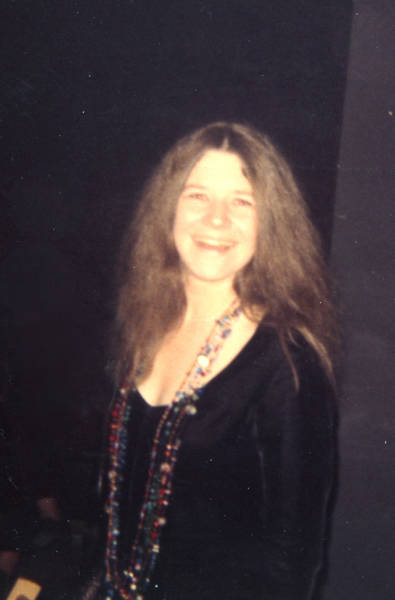Texas was cruel to Joplin. Growing up in Port Arthur, she never fit in. Later, in Austin, her college newspaper declared her the “Ugliest Man on Campus.” So Helms — who at the time was just a freewheelin’ intellectual, but would later co-found the influential concert promotion company the Family Dog — ended up taking Joplin with him to San Francisco.
“I thought that if she came to California, she would knock people in San Francisco on their ass because this is something they had imagined but not experienced,” he said.
The first time she performed in San Francisco, at a small cafe called Coffee and Confusion, she received a standing ovation. A hat was passed around and she ended up making about $60 — over $400 in today’s money.
After months of trying to kick off a music career, she headed back to Texas to kick a speed habit. But Helms came back for her in ’65 so she could join a band he was managing called Big Brother and the Holding Company. The band had started in the basement of 1090 Page Street, coming together during weekly jam sessions that featured residents of the 22-room boarding house. It wasn’t long before they were playing small gigs all over the city. And though they were good, they needed a real singer, and they wanted a female singer because that what was happening in San Francisco: Bands like Great Society and Jefferson Airplane were taking off in under a year.
By the time Helms recruited Joplin, the San Francisco music scene was becoming legitimate. It was no longer small clubs, birthday parties and basements; bands were playing large halls like the Fillmore and the Longshoreman’s Hall. And though the members of Big Brother were initially reticent to hire a singer as unique as Joplin, they were willing to give her talent a chance.
Big Brother guitarist Sam Andrew, who died in February of 2015, would say later Joplin stood in the band’s shadow when she first joined — but it wouldn’t be long before the band was looking up to her.
“She was this Texas girl, she dressed the way mother dressed — very dowdy and not with it. That lasted for about six months,” Andrews said in 1998. “She just became larger than life.”
Months later, with her star on the rise, Joplin’s family came out to San Francisco to visit her. To Janis’s sister Laura’s surprise, Joplin was recognized everywhere she went.
“All kinds of people running up and saying, ‘Give me your autograph Janis,'” Laura Joplin said to Ben Manilla Productions in 1998.
Joplin’s career would only last a few years before she would die of an overdose in 1970. But Laura, who lives in Chico now, says that after Janis moved to California, she became a poster child for self-empowerment.
“I think what Janis has become is a symbol of someone breaking down doors. She isn’t used as ‘This is the person to copy.’ She’s more someone who said, ‘Look, you can do what you want to do, you don’t have to do what people expect or think you should do,'” Laura said.
And San Francisco was the city that let her bloom. When she played with Big Brother, she lived in the Haight, which had been practically abandoned a decade before when a freeway project threatened to tear the whole thing down. It wasn’t hard to find a room for rent for around $20-a-month – just over a $100 in today’s money.
Now, blessed with the musical legacy left by Joplin and her counterparts, apartments in the Haight go for thousands of dollars a month. Which makes you wonder, if Joplin was starting her career today, would she still move to the San Francisco?
On May 3, KQED 9 will be premiering two documentaries on Janis Joplin: Janis: Little Girl Blue and San Francisco’s Pearl. For more information on these films, visit the KQED Arts website, American Masters: Janis Joplin.
For those interested in learning more about the Haight Ashbury neighborhood, check out the Detour app, which was created in partnership with KQED. Our music editor Gabe Meline reviewed the app’s walking tour of the famous neighborhood earlier this year.



